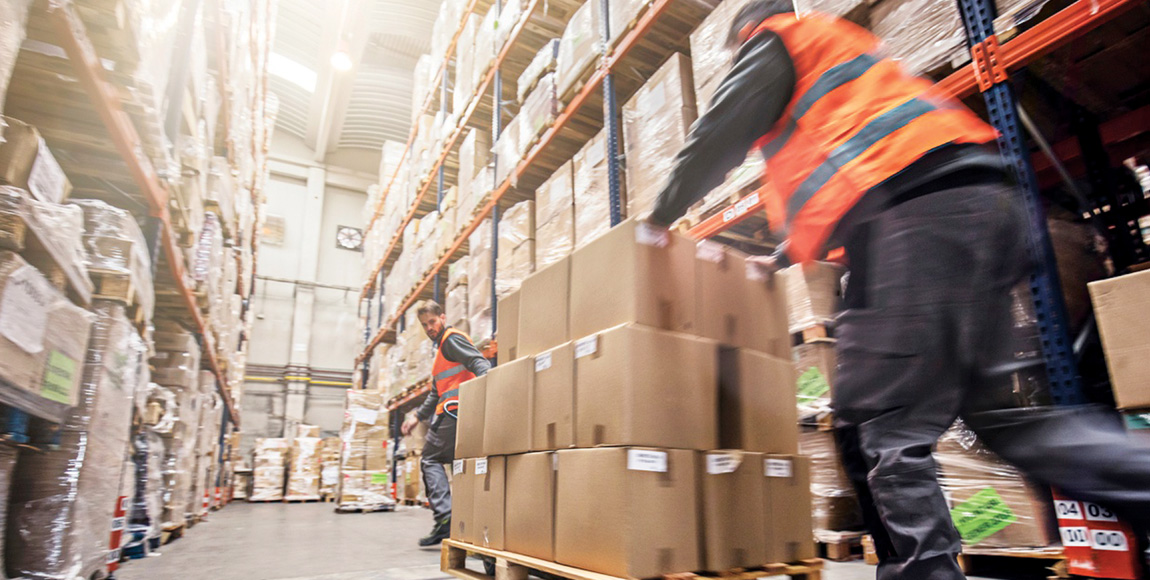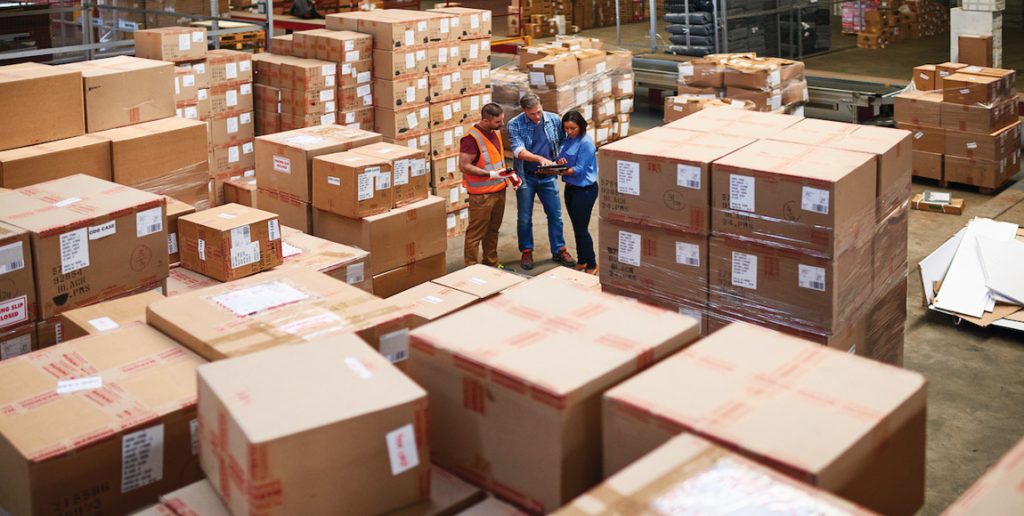Warehousing key to battling e-commerce

As e-commerce continues to grow and reinforces consumers’ expectations of fast, convenient delivery of goods, effective warehousing could be key to keeping logistics and transport companies competitive. MARISKA MORRIS reports
Whether or not a company is in retail, e-commerce is dramatically impacting on the expectations of consumers and, in turn, on the logistics industry. With the convenience of ordering goods with the click of a button, which are then delivered within a few days (or hours) to a destination chosen by the consumer, logistics companies are under more pressure than ever to provide convenient, speedy deliveries.
According to a report published by Barloworld Logistics in November 2018, local online sales have increased by
19 percent in 2018 alone. It is estimated that e-commerce will grow by 36 percent with total online sales at R60 billion by 2020. Global urban supply spend is expected to be at nearly R83 trillion by 2020.
Most companies are concerned about how e-commerce will impact on ground transport, according to a DHL special report entitled: The logistics transport evolution: the road ahead, there is already an expectation on companies to deliver goods quickly and to a place that is convenient for the consumer.
As e-commerce grows, companies are also expected to always have stock on hand. Warehouse logistics plays an incredibly important role in ensuring stock is available and that it is loaded onto the delivery vehicle efficiently. The biggest challenge for companies is maximising warehouse space and collecting goods efficiently.
Maximising warehouse space
Doing more with less is the approach taken by Bidvest Panalpina Logistics (BPL) with the help of technology, consolidation and networking. Marcus Ellappan, road-freight director of BPL, notes: “Automation of information can be accommodated a lot easier than employing additional staff.
“However, having the right skills to interpret automated outputs will result in the delivery of a better and value-adding service to clients. So, while automation adds great value, so do staff who have the necessary skills.” Technology can help reduce waste and associated costs, but the equipment needs to be used and maintained correctly.
BPL uses value-stream mapping to scientifically calculate the required stock or services. Willem Bekker, supply chain solutions manager at BPL, explains: “We decided to apply some engineering and scientific principles to the operation, in order to model and simulate resource capacity.
“We’re moving away from a ‘gut-feel’ approach to resource calculations; and also not just applying accounting principles, but using engineering techniques in areas that have traditionally shied away from data-driven decision-making.”
The logistics service provider standardised its processes throughout the country to make it easier to distribute resources. Bruce Thoresson, international logistics director at BPL, says: “If we have capacity in a particular region, then we can direct new volumes to be processed in that region rather than in the region where new business has been signed up.
“Similarly, if a client’s volumes spike, then we can accommodate that spike in other areas. In this way we’ve created the ability to maintain a solid balance between volume and resources, which means that our clients receive a consistent service, while benefiting from an efficient cost of service delivery.”
BPL warehouses have also been adapted to provide more storage – by adding more bins and shelving to increase volume – while more warehouses are built. Steve Smith, warehouse director at BPL, explains: “Pallet positions in our general store increased by 68 percent and our chemical and flammable stores by 112 percent.
“This was achieved without any increase in overhead staffing, resulting in the realisation of significant economies of scale.” This increased volume without increased costs helps provide clients with competitive prices while maintaining quality service.

Micro-origin fulfilment centres
Barloworld Logistics discussed a similar concept: micro-origin fulfilment centres – a popular international trend that is yet to gain traction locally. With this concept, retailers can place small-scale warehousing facilities in convenient, accessible urban areas near the end consumer.
Some centres are dedicated buildings, while others inhabit space at existing buildings, for example, basements of office buildings or stockrooms of local stores. This makes quick delivery more convenient. These alternative warehousing centres are also crucial to combat congestion, which is a big concern to most companies.
In its report, DHL notes: “One challenge in particular, according to survey participants, is urbanisation, which poses significant challenges for companies and their third-party logistics partners trying to deliver into these high-density cities. Sixty-one percent of survey respondents indicated this demographic shift will significantly impact their future business.”
In addition to alternative warehousing centres, Barloworld Logistics suggests: “Online retail replenishment supply chains are also contemplating operational environments that move away from high racking and more towards highly condensed, mobile robotic storage on the floor with lower ceilings and single-product units brought to the picker.
“The picker selects one or two single-product units depending on the order, and then sends the inventory on its way.” This integration of robotics into the warehouse is already a reality for many DHL warehouses.

Robotics and the future of warehousing
DHL offers fully autonomous self-driving robots that assist pickers with transporting stock. These robots, directed by the warehouse management system (WMS), travel to the destination of the stock or follow the picker. Thereafter it transports the full order to the packing area – removing the need for the picker to go there.
WMS assists with all the warehousing-related activities from stock locating and inventory management to order allocation and shipping. Some of the key benefits of these robotics include a reduction in the order cycle time of up to 50 percent.
It doubles picking productivity, offers hands-free picking, reduces training time for pickers by up to 80 percent and allows more flexibility in the warehouse environment. Implementing WMS alone could provide companies a significant increase in productivity.
According to DHL, the use of WMS is popular in the United States (US) and Europe. WMS is estimated to grow to US$ 4,1 billion (R56 billion) by 2024, according to Statista. While the original purpose and use of WMS has remained the same, aside from improving user interface and processing power, there are a few things to look forward to.
WMS will connect to smart technology, for example. Consider the wearable-vision picking devices or smart glasses tested by DHL. It provides visual displays of order picking instructions to free the picker’s hands.
According to DHL’s special report, e-commerce has become somewhat of a common feature in the US with its impact declining from 63 to 60 percent over the next few years. However, during the same period its impact in Africa is expected to increase from 65 to 69 percent.
“One possible explanation is that in five years’ time e-commerce will have become ‘business as usual’ in the US and not as difficult or impactful an operational issue as it is today.” With this expected growth in e-commerce and its impact on logistics, companies should consider reviewing warehousing strategies and implementing new technology to ensure effective warehouse logistics.
Published by
Mariska Morris
focusmagsa




